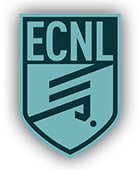What a True Player Development Program Looks Like - On The Field
Individual technical ability is the most important pre-requisite to play high-level soccer. Unfortunately, most youth soccer clubs fall into one of two categories:
- Teams with a majority of players that have played within the club for multiple years with a shocking lack of technical ability; or
- Teams with players with some technical ability that rarely attempt to play attractive or thoughtful soccer.
It is possible to differentiate between good development clubs and poor development clubs by dividing teams and players that "play soccer" from those that actually just "play at soccer." What’s the difference?
- Playing Soccer: A game where players make conscious decisions about where and how to play the ball, conscious decisions about where and how to move and run, and show care for technical execution.
- Playing at Soccer: A game marked by an inordinate emphasis on field position and hustle, and players that seem most concerned with kicking the ball far away.
When watching players and teams that are trying to play soccer, the game almost always "makes sense.” This means that players are thinking about what to do with the ball, and passes are played with a degree of thought — not just aimlessly hit forward. The ball is played backwards or square as often as it is played forward, and the team attempts to keep possession of the ball through combination play and passing. At young ages, while these ideas may not be executed perfectly, importantly, the players show that they actually have ideas. Within a good development environment, you can see tremendous growth in execution and thought from players within a season, and more from one year to the next.
- Are players trying to pass the ball to teammates, or are most passes just hit forward into space?
- Does the team try to possess the ball? How many passes does the average possession last?
- Is the ball out of play for a significant part of the game? (Bad sign)
- Is everyone moving and involved in the game, or only the player with the ball and 1-2 nearby teammates?
- How many times is the ball passed backwards? (As a rule of thumb, 1 of 3 passes should be backwards.)
- Is most of the coaching communication concerned with “working harder”? (Question: What do players do when “working harder” is no longer sufficient because of a lack of soccer knowledge or technical skills?)
- Does the team rely primarily on hitting the ball forward to a fast player up front to score, and on a fast player in the back to cover for mistakes and send the ball forward? (If so, what kind of learning experience are the other 9 players getting? As you play at higher levels, defenders get faster and smarter ... so how do these players find success when athleticism evens out through maturity?)
- Does the game look out of control? (Are there rapid, consecutive turnovers? Are players running around with little organization or purpose?)
- Does the team play any differently at the end of the season than they do at the beginning of the season?
Think about these questions when evaluating developmental programs. Players that desire to play at high levels when they get older need to learn how to play soccer now. Players and teams that play soccer, not simply play at soccer, will win in every sense of the word in the long run—and by then it’s too late to for those who played at soccer to catch up.



